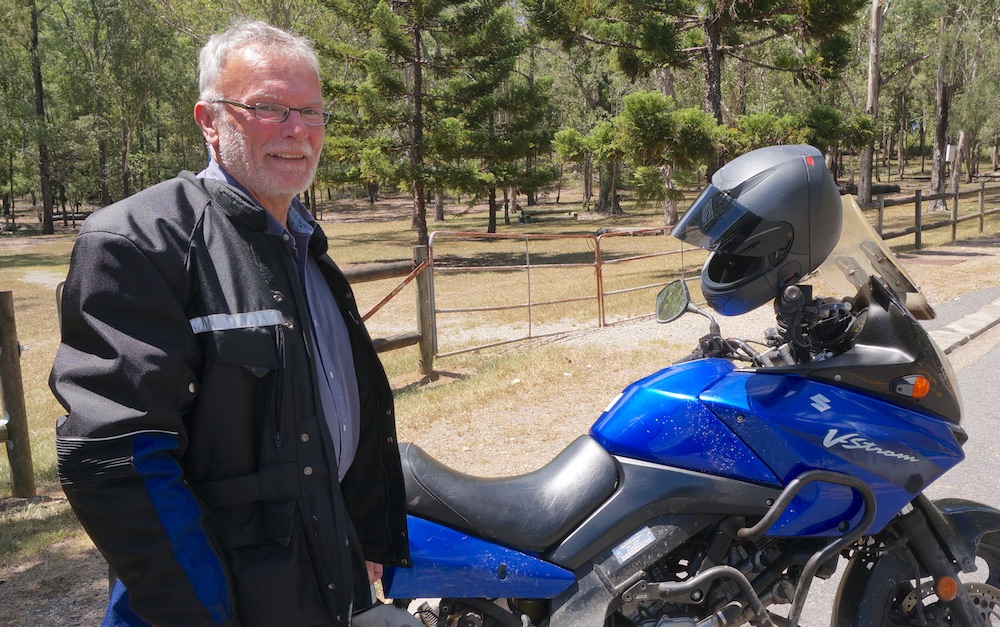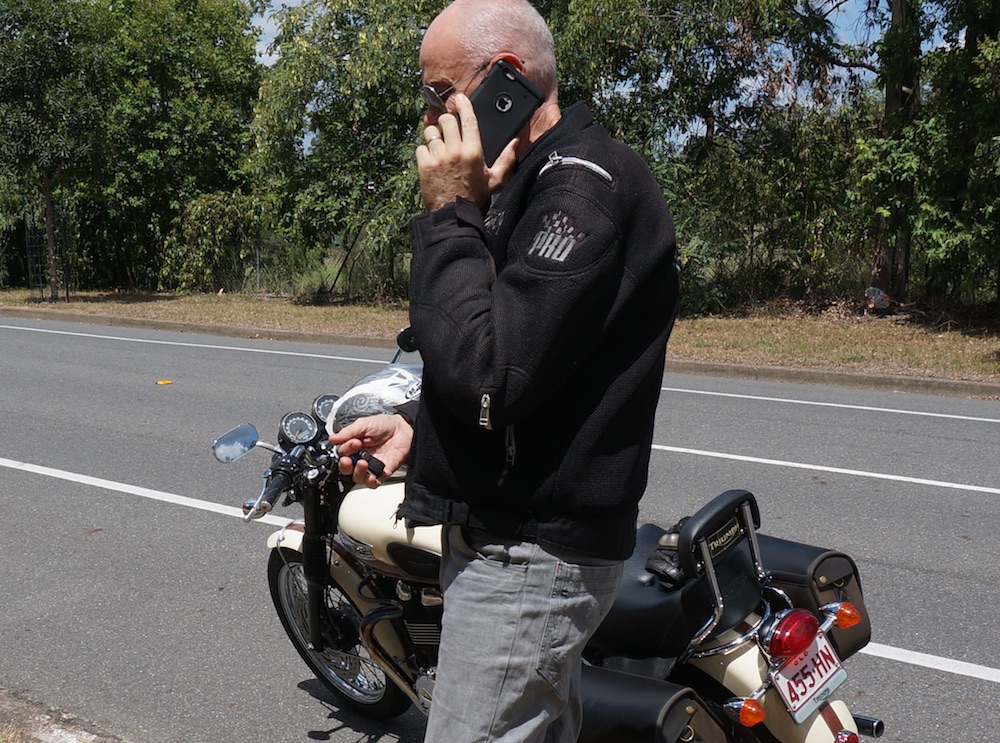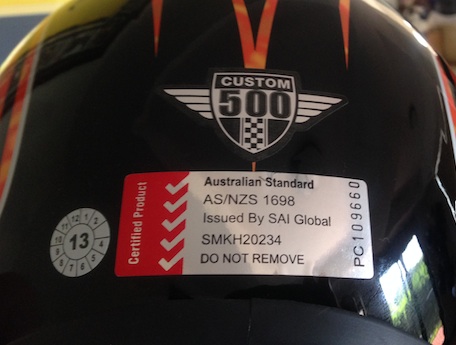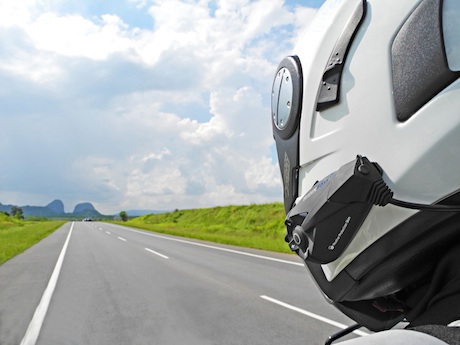If you use a mobile phone while riding, or even if you pull over to make a call, you could still be unwittingly breaking the law.
Australian Motorcycle Council representative Guy Stanford believes using a mobile phone while riding is dangerous and has stopped using a Bluetooth communicator.
But he says the laws about their use are “too vague and typical of some of the badly written rules that leave riders confused”. He says the laws are also open to police misinterpretation and abuse.

While the rules prohibit learner or provisional riders from even using a handsfree device, there is nothing prohibiting an unrestricted rider from using a Bluetooth intercom paired to their phone to make and answer calls while riding.
Most modern smartphones allow users to perform most of those functions by voice activation.
However, it is legal to access phone, GPS or music functions via the phone with your finger while riding, so long as the phone is secured in a mounting fixed to the bike and doesn’t obscure your view of the road or your motorcycle instruments. You also must not hold the phone with your hand.
Even though it is not illegal to access a phone in an approved cradle, we believe it’s dangerous and recommend pulling over to access these functions.
Park and call
If you don’t have a Bluetooth intercom and want to answer a call because you can feel it vibrating in your pocket or you want to make a call, you must pull over and park your bike.
You can’t access your phone just while stationary, for example, at traffic lights.
However, Guy says the interpretation of what is “parked” is vague.

We asked police and transport departments across all states for their interpretation of what constitutes being parked and received different answers.
They agreed it must be to the left side of the road in “an authorised parking spot”.
However, some allow riders to still have the engine running while others say it must be switched off.
Guy says the rules are so vague, you may also have to remove the key and get off the bike.
He says the key words are that the motorists must not be “in control” of the vehicle.
“At what point do you become in control of your vehicle?” he asks.
“Is it from the point of putting your key in the ignition or sitting on the bike?
“If so, you can turn off your engine, take your helmet off and get off the bike, but if your key is still in the ignition, it could be illegal.
“These are the funny little grey areas of our road rules that need to be fixed up.”

(The mobile phone misuse penalty is four points and the law does not apply to CB or other two-way radios.)
Bluetooth illegal?
Guy says there is also still a “grey area” about whether Bluetooth communicators are illegal attachments on helmets.
While we haven’t heard of any riders being fined for a Bluetooth unit, several have been fined for having cameras attached to their helmets.
Guy disputes police interpretations of the rules about helmet attachments rendering a helmet non-compliant if they project further than 5mm from the helmet.
He says that if an attachment projects more than 5mm the AS/NZS Standard requires it to be tested if it is part of the helmet being certified.
“That doesn’t make it illegal,” he says.
“What about peaks on motocross helmets? They project more than 5mm.
“Using the police misinterpretation of the rules, your helmet would even be non-compliant if you take it out of the box, because the compliance also mentions packaging and labelling.”
Guy is calling for the rules to state clearly that compliance is at the point of sale. Evidence of this is the presence of an appropriate standards sticker.

He says the Western Australia rule states that very simply and clearly. The ACT has also amended their rules to disclaim the standard to allow cameras and Bluetooth unit attachments.
“It’s a good Bandaid solution for the time but it’s putting them on shaky ground amending the rules like that,” he says.
“Once you start removing parts of a standard, it is compromised. Standards need to be used correctly.”
Meanwhile, he says police in several states are “just using the rules to harass riders”.
“They don’t know what they are doing and just pretending they understand the standards,” he says.
“But all they are doing is causing confusion and bringing the police into public disregard.”
Guy says there is no conclusive, independent research to show that helmet attachments have cause an increase in rotational head injuries.
“If there is ever a link established between helmet attachments and an increase in rotational head injury, only then should we make a change to the laws to ban them,” he says.
“Speculation about injury increases is the province of those seeking funding for research or having other reasons to make up stuff,” he says.


